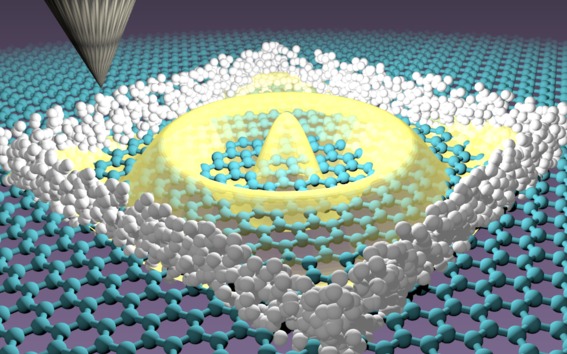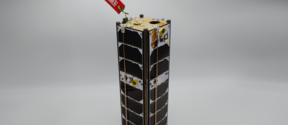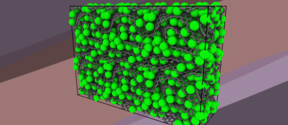Stopping the unstoppable with atomic bricks

Graphene's unique 2D structure means that electrons travel through it differently to most other materials. One consequence of this unique transport is that applying a voltage to them doesn't stop the electrons like it does in most other materials. This is a problem because to make useful applications out of graphene and its unique electrons like quantum computers, it is necessary to be able to stop and control graphene electrons.
An interdisciplinary team of scientists from the Universidad Autonoma de Madrid (Spain), Université Grenoble Alpes (France), International Iberian Nanotechnology Laboratory (Portugal) and Aalto University has managed to solve this long-standing problem. They combined experimental researchers including Eva Cortés del Río, Pierre Mallet, Héctor González‐Herrero, José María Gómez‐Rodríguez, Jean‐Yves Veuillen and Iván Brihuega with theorists, including Joaquín Fernández-Rossier and Jose Lado, assistant Professor in the department of Applied Physics at Aalto.
The experimental team used atomic bricks to build walls capable of stopping the graphene electrons. This was achieved by creating atomic walls that confined the electrons, leading to structures whose spectrum was then compared with theoretical predictions, demonstrating that electrons were confined. In particular, it was obtained that the engineered structures gave rise to nearly perfect confinement of electrons, as demonstrated from the emergence of sharp quantum well resonances with a remarkably long lifetime.
The work, published this week in Advanced Materials, demonstrates that impenetrable walls for graphene electrons can be created by collective manipulation of a large number of hydrogen atoms. In the experiments, a scanning tunnelling microscope was used to construct artificial walls with sub nanometric precision. This led to graphene nanostructures of arbitrarily complex shapes, with dimensions ranging from two nanometres to one micron.
Importantly, the developed method is non-destructive, allowing to erase and rebuild the nanostructures at will, providing an unprecedented degree of control to create artificial graphene devices. The experiments demonstrate that the engineered nanostructures are capable of perfectly confining the graphene electrons in these artificially designed structures, overcoming the critical challenge imposed by Klein tunnelling. Ultimately, this opens up a plethora of exciting new possibilities, as the created nanostructures realize graphene quantum dots that can be selectively coupled, opening ground-breaking possibilities for artificially designed quantum matter.
Read More
“Quantum Confinement of Dirac Quasiparticles in Graphene Patterned with Sub‐Nanometer Precision” Advanced Materials https://doi.org/10.1002/adma.202001119
Contact

Read more news

Finland’s Foresail-1p science satellite successfully launched into space
The Finnish science satellite Foresail-1p was successfully launched into space after 8 PM Finnish time on Friday 28 November 2025, aboard the Transporter-15 mission from Vandenberg Space Force Base, California.
A paradigm shift: machine learning is transforming research at the atomic scale
Assistant professor Miguel Caro and his research group use and develop machine learning tools to accelerate discoveries from simulation to experiment
Aalto academics begin Unite! visiting professorships at TU Darmstadt
As part of the Unite! Visiting Professorship Programme, TU Darmstadt welcomed six visiting professors from Aalto University for the winter semester 2025/2026.






